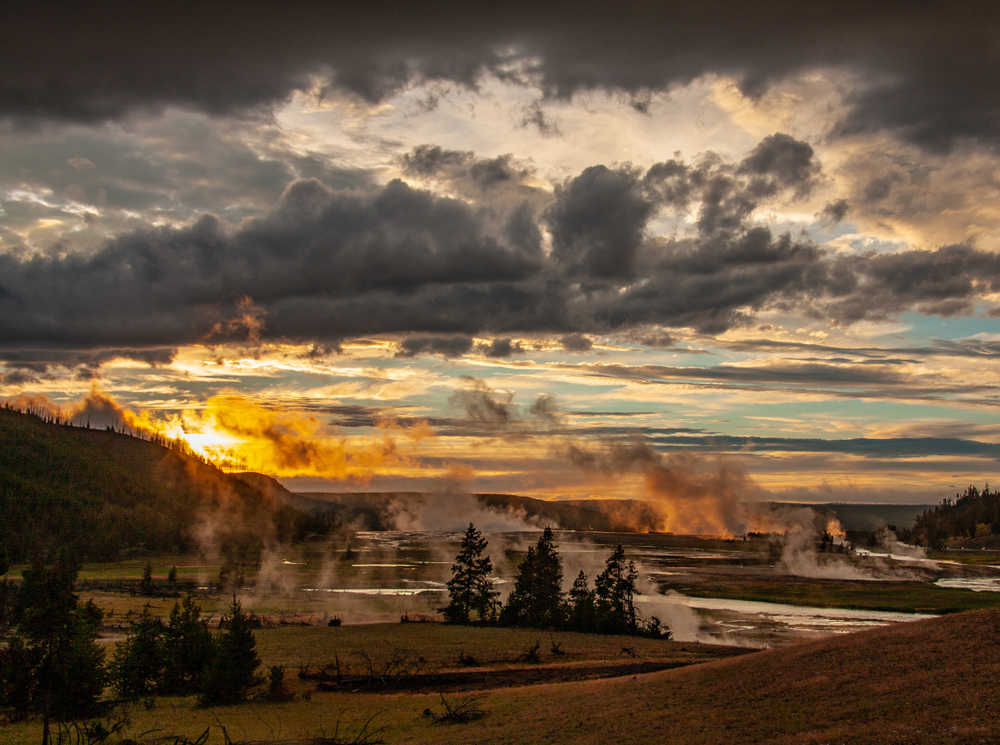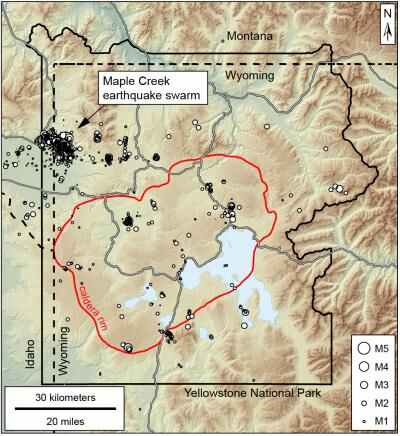Why Thousands of Aftershocks of a 1959 Earthquake Just Rumbled Through Yellowstone 60 Years Later

A swarm of thousands of tiny earthquakes that rumbled below Yellowstone National Park in 2017 and 2018 might be the long-awaited aftershocks of a much larger quake — which struck 60 years ago.
In a paper published April 30 in the journal Geophysical Research Letters, researchers examined the seismicity of some 3,345 earthquakes that occurred near Yellowstone's Maple Creek, in the northwest corner of the park, from June 2017 to March 2018. They found that, for about half of those minor quakes, seismic waves below the park rippled along the same fault line, and in the same exact direction, as the waves behind the so-called Hebgen Lake event — a mammoth, magnitude-7.2 earthquake that struck there in 1959 and killed 28 people.
The team didn't see any signs that this cluster of quakes was caused by magma movement under the park, leading them to conclude that the rumbles were, in fact, a suite of seismic aftershocks six decades in the making. [What If the Yellowstone Supervolcano Erupts?]

"These kinds of earthquakes in Yellowstone are very common," study co-author Keith Koper, director of the University of Utah Seismograph Stations, said in a statement. However, this swarm "was a little bit longer and had more events than normal."
How unusual is it for an earthquake to continue rumbling 60 years after the fact? According to the study authors, it's not unheard of, and similar cases have popped up nearby in North America. The magnitude 6.9 earthquake that struck Borah Peak, Idaho, in 1983 was still producing aftershocks as recently as 2017, the researchers wrote, and it's hypothesized that, under certain conditions, aftershocks can last for hundreds of years.
Unlike floods, hurricanes and other natural disasters, earthquakes "don't happen as a single discrete event in time," Koper said, but rather can evolve over decades or centuries.
While about half of the Maple Creek mini-quakes seemed to be ripples of the 1959 disaster, the other half, which occurred a little farther south, seemed tied to natural activity in the magma pit below the park, the researchers wrote.
Sign up for the Live Science daily newsletter now
Get the world’s most fascinating discoveries delivered straight to your inbox.
Yellowstone remains a hotbed of seismic and volcanic activity, which often go hand-in-molten-hand. Much of the park sits over a large volcanic caldera, which is responsible for the routine eruptions of beloved geysers like Old Faithful. The gargantuan volcano beneath the park has erupted three times in the last 2.1 million years and, some scientists speculate, could be due for a fourth eruption.
Luckily, the authors of the new study said, the aftershocks of the Hebgen Lake quake are located outside the Yellowstone caldera, and likely have little to no bearing on the volcanic activity there. If you're looking for portents of doom, look elsewhere — perhaps to the 80-years-worth of man-made trash that spewed from the nearby Ear Spring geyser just last year.
- Yellowstone National Park: The Early Years (Photos)
- Yellowstone and Yosemite: Two of the World's Oldest National Parks
- Image Gallery: This Millennium's Destructive Earthquakes
Originally published on Live Science.

Brandon is the space/physics editor at Live Science. His writing has appeared in The Washington Post, Reader's Digest, CBS.com, the Richard Dawkins Foundation website and other outlets. He holds a bachelor's degree in creative writing from the University of Arizona, with minors in journalism and media arts. He enjoys writing most about space, geoscience and the mysteries of the universe.










